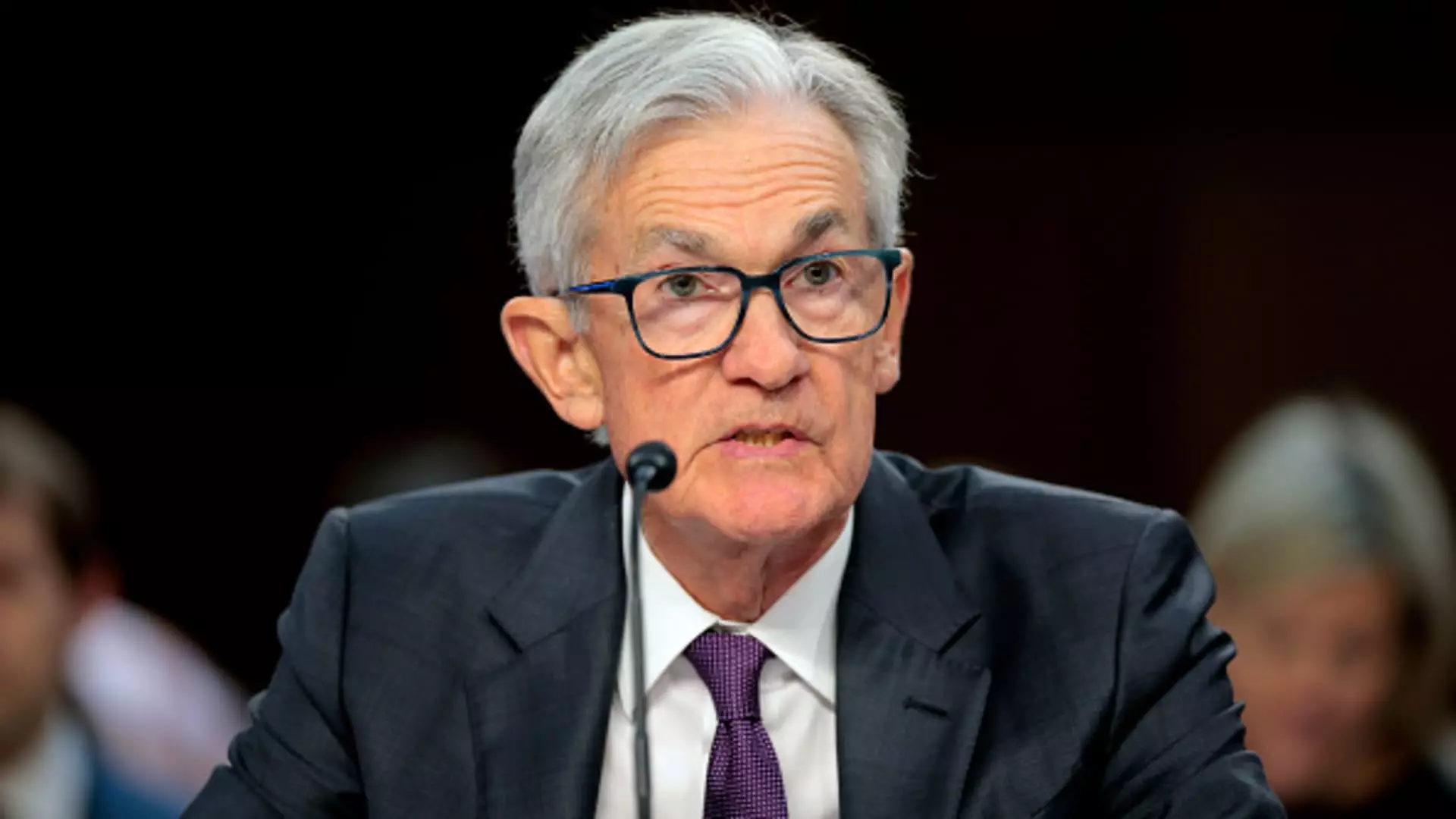The March CNBC Fed Survey has unveiled a chilling reality for American economic prospects, revealing an alarming increase in recession fears that have surged to a stark 36%, a notable jump from 23% just a few months prior. This shift in sentiment signals a critical re-evaluation by financial experts—fund managers, analysts, and strategists—who once harbored optimism fueled by the election of President Trump. This optimism has evidently been unraveling, as the initial bounce back from previous lows seems to fade into an increasingly murky economic narrative. Tariffs, it appears, have taken center stage as the preeminent threat looming over the U.S. economy, outstripping inflation concerns that had previously gotten so much attention.
What’s striking is the rapidity with which perceptions have altered; less than half a year ago, there was a semblance of confidence about overcoming economic hurdles. The abrupt shift reflects an unsettling reality—economic responses to governmental policies are becoming more conservative, leading many to question the efficacy of the Trump administration’s trade strategies. Barry Knapp from Ironsides Macroeconomics touches on this volatility when he states, “the Trump agenda has gone off the rails due to trade policy.” Such a stark assertion from seasoned economists evokes fears that the repercussions of this misalignment could extend beyond short-term issues, indicating a fundamental instability.
GDP Deterioration: A Stark Reality Check
Compounding this issue is the new forecast for U.S. GDP, which has plummeted to 1.7% for 2025—a significant downgrade from the previous 2.4%. This downward revision signals a critical point of concern for policymakers and stakeholders alike, as the persistence of low growth rates can stifle business investment and consumer confidence. Neil Dutta, head of economic research at Renaissance Macro Research, observes that consumer spending appears precarious. Coupled with a stagnant housing market, reduced spending across state and local governments, we observe a clear heading toward uncertainty, which places further downward pressure on growth estimates.
Such a shift from a projected rebound back to a stable 2.1% in 2026 is a mixed bag of good and bad news, but nonetheless carries implications that cannot be overlooked. The American economy, once viewed as a powerhouse, is now grappling with tensions that stymie growth and unleash latent fears over recession on the horizon. It is paramount that we parse these narratives, for they highlight the increasingly fractured relationship between governmental policies and their tangible impacts on economic health.
The Fed’s Tightrope: Inflation, Tariffs, and Rate Cuts
The Federal Reserve finds itself in a particularly convoluted predicament. Two-thirds of respondents exhibit a shared belief that tariffs will provoke short-lived price hikes rather than triggering a widespread inflationary crisis. Yet, the uncertainty surrounding these tariffs complicates the Fed’s ability to maintain steady monetary policy. Despite indications that the economy demands a careful approach, the muddled landscape presents a dilemma that could leave Federal Reserve Chairman Jerome Powell in a proverbial quagmire.
As Peter Boockvar articulates, Powell’s hesitance to act must be tempered against political realities and market sensitivity to unemployment and growth forecasts. The tension between the need for policy adjustments and the risk of overcorrection looms large, causing many analysts to predict at least two cuts in interest rates this year—a tactic that could serve to ameliorate a teetering economic environment.
Tariffs: A Double-Edged Sword for American Progress
It’s not just the Fed’s policies that are under scrutiny. An overwhelming 70% of survey respondents believe that tariffs are detrimental to inflation, jobs, and overall economic growth. The debate echoes a broader ideological confrontation regarding trade policy and its implications for American manufacturing and employment. The climate for a trade war, once thought a distant concern, now manifests terrifyingly close to reality as Mark Zandi of Moody’s Analytics paints a grim picture: “A global trade war, haphazard DOGE cuts to government jobs and funding… threaten to push what was an exceptionally performing economy into recession.”
This perspective reveals that the ramifications of the current administration’s policies are more than mere economic oscillations; they threaten to reshape the very fabric of the American economic landscape. With contrasting opinions ranging from a belief in tariff-led growth to predictions of significant declines, it becomes essential to interrogate the prevailing economic strategies. The fabric of American economic policy requires both reflection and a commitment to forging a pathway forward that safeguards stable growth, lest we succumb to the specter of recession lurking around the corner.

Leave a Reply